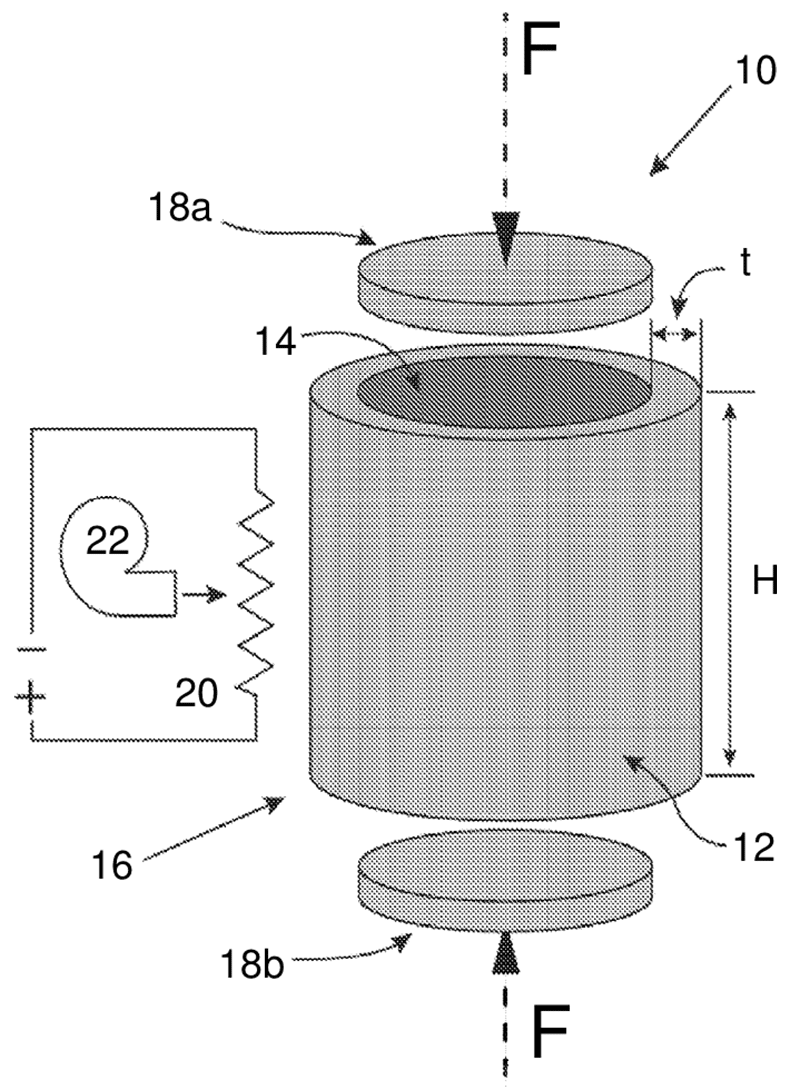Nanocellulose fibrils (CNF) are generally produced from wood pulps by refining, grinding or homogenisation processes. The type of wood and the extent of refinement can govern the final dimensions of the fibres – typically between 0.1-4.0mm in length with nanometre-size diameters. Nanocellulose materials can exhibit similar mechanical properties to plastics but with higher hydrophobicity and biocompatibility.
Large-scale production of nanocellulose materials requires large volumes of water to form nanocellulose slurries (90-97wt% water), which must be dilute enough to flow through the refining machinery while providing sufficient surface area for chemical activity.
Drying the slurries to remove water by heat, air and gravity alone can result in a layered density, with upper layers compressing lower layers and hydrogen bonds that form erratically. Rapid dewatering can inhibit hydrogen bonding, adversely affecting the mechanical properties of the resulting nanocellulose material.
In December 2020, the University of Maine, USA, was granted European Patent, EP3436515B1 designating the UK, titled Controlled Porosity Structural Material with Nanocellulose Fibers.
The patent claims a method for fabricating a porous nanocellulose material (PNM), placing an aqueous suspension comprising CNF in contact with a first surface of a porous dewatering material, and removing at least a portion of the water in the aqueous suspension via capillary action thereby forming a PNM. The removing step continues for at least eight hours.
The suspension may include about 1-10wt% of nanocellulose solids, and the porous dewatering material may have a hydrophilic surface. The method may include a mould or other vessel, for example, a belt or wheel as the porous dewatering material. The rate of water removal may be between 0.001-2.0L/hr/20L of the starting suspension.
The illustrated embodiment shows a porous cylindrical mould (10) having an open end for the insertion of a CNF suspension and comprising walls (12) with longitudinal dimension (H) and thickness (t) dividing the interior (14) and exterior (16).
End covers (18a,18b) that close the open ends of the hollow chamber may be moveable such that a force, F, may be applied to compress material within the interior. When placed in direct contact with the CNF suspension, the mould pores generate a capillary force drawing water from the suspension in the interior towards the exterior through the walls.
The method may include controlling the pressure and/or temperature to control the rate of water removal from a second surface (which may be opposite the first surface) of the porous dewatering material until the PNM comprises about 5-95wt% nanocellulose solids.
A heating element (20) may be used for heating the mould or its surroundings in a controlled manner. Air flow around the exterior of the walls may be controlled by fans or blowers (22). The use of pressure, heat, airflow, or combinations thereof, to maintain an elevated water evaporation rate can achieve a more rapid and/or complete dewatering.
The method may further include separating the PNM from the first surface of the porous dewatering material and drying it further. This may result in 15-95wt% of nanocellulose solids content. The method may include freezing and then evaporating the frozen remaining water.
The controlled dewatering and modulation of intermolecular CNF-CNF hydrogen bonds may be achieved by balancing the internal pressures – applied force, F, and hydrostatic pressure that “push” fluid out of the mould, and the capillary pressure that “pulls” water out of the suspension through the mould – upon which water removal is principally dependent.
If the water removal process proceeds too quickly, CNF molecule movement is inhibited, preventing formation of an optimal hydrogen bonding network, resulting in a weaker material. Typically, it takes eight to 36 hours for this network to form depending on the desired final porosity. The drying process allows for water, breaking of fibre-water hydrogen bonds and the formation of fibre-fibre hydrogen bonds.
Read the full patent here
This article first appeared in the May 2021 issue of Materials World, the member magazine of the Institute of Materials, Minerals and Mining.


